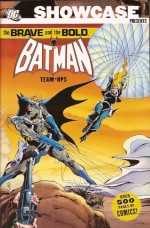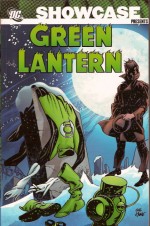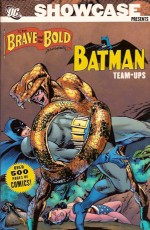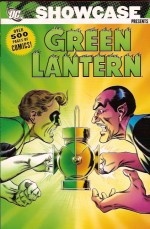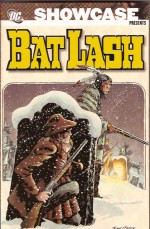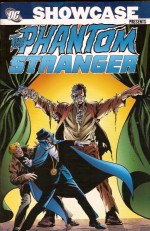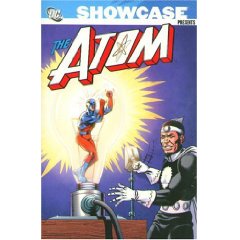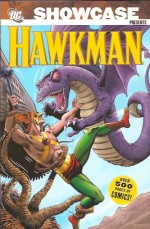
By Gardner Fox, Murphy Anderson, Bob Haney, Dick Dillon & various (DC Comics)
ISBN13: 978-1-4012-1817-1
After fighting long and hard to win his own title it was such a pity that time and fashion seemed to conspire against the Winged Wonder…
Katar Hol and his wife Shayera Thal were police officers on their own highly advanced planet of Thanagar. They originally travelled to Earth from the star system Polaris in pursuit of a shape-changing spree-thief named Byth but stayed to study Earth police methods in the cultural metropolis of Midway City. This all occurred in the wonderful ‘Creature of a Thousand Shapes’ which appeared in The Brave and the Bold #34 (cover-dated February-March 1961), but the public was initially resistant and it was three years and many further issues, guest-shots and even a back-up feature in Mystery in Space before the Winged Warriors finally won their own title
Hawkman #1, cover-dated April-May 1964, signalled the beginning of a superb run of witty, thrilling, imaginative and hugely entertaining science fiction, crime-mystery and superhero adventures that captivated the devoted but still painfully small audience.
This second, concluding volume, reprinting in crisp efficient black and white Hawkman #12-27, Brave and the Bold #70, The Atom #31 and the avian portions of the last-ditch combination-comic The Atom and Hawkman #39-45, recommences the magic with another large-scale cosmic epic that originally debuted in February-March 1966 (issue #12). ‘The Million-Year-Long War!’ is pure Gardner Fox storytelling, recounting how a Thanagarian exploration team awakened two aliens determined to kill each other even after eons of suspended animation and whose enmity drove them to possess all of Thanagar, turning Hawkman’s homeworld into one huge weapon. As usual Fox’s imaginings were gloriously illustrated by Murphy Anderson – as they would be until Julie Schwartz surrendered editorial control with issue #22.
Hawkman #13 featured a startling time-bending saga ‘Quest of the Immortal Queen!’ wherein a Valkyrie from Earth’s far future decided to add the Winged Wonder to her seraglio of lusty warriors plucked from history. Happily his wife Shayera strenuously objected and is both smart and tough enough to sort things out. Fox’s treatment of female characters was highly unique for those pre-feminist times: all his heroines – a large number of them wives, not wishy-washy “girlfriends†– were capable, intelligent and most importantly, wholly independent individuals.
Hawkgirl was written as every bit her husband’s equal and the Hawks had one of the most subtle and sophisticated relationships in the business. Like Sue and Ralph Dibney (Elongated Man and wife) Katar and Shayera were full partners, (both couples were influenced by the Nick and Nora Charles characters of the Thin Man movies) and the interplay between them was always rich in humour and warmth.
As a sign of the times super-secret criminal conspirators C.A.W. returned to seize control of the ‘Treasure of the Talking Head!’ – an ancient computer which held all the world’s knowledge, built before the birth of Christ, and the Pinioned Paladins then faced a fantastic monster in ‘Scourge of the Human Race!’, an encounter which revealed the true history of humanity as the last surviving specimen of Homo Sapiens’ earliest rival for mastery of the planet attempts to reverse evolution…
Issue #16 was a dimension-hopping sequel to Hawkman #6 (‘World Where Evolution Ran Wild’): an incredible Lost Worlds romp which combined secret history, fantastic fantasy and DC’s signature fascination with apes and simians in ‘Lord of the Flying Gorillas!’ whilst #17’s ‘Ruse of the Robbing Raven’ changed pace with a clever costumed crook caper. The issue also contained the first short back-up tale in over a year – another science based mystery entitled ‘Enigma of the Escape-Happy Jewel Thieves!’
Hawkman then guest-starred – and clashed – with Batman in The Brave and the Bold #70 (February-March 1967): ‘Cancelled: 2 Super-Heroes’ by Bob Haney, EC legend Johnny Craig and Chuck Cuidera saw the usually comradely crime-busters at each others throats due to the machinations of a manic millionaire who collected secret identities, whilst later that month in his own title the Winged Wonder teamed with Adam Strange against the malevolent Manhawks to locate the ‘World That Vanished!’ The planet in question was Thanagar and when it went it took Hawkman’s beloved Shayera with it…
This colossal tale concluded in the next issue with the action-packed ‘Parasite Planet Peril!’ and the Avian Ace then joined his old friend in The Atom #31 for ‘Good Man, Bad Man, Turnabout Thief!’ (by Fox, Gil Kane & Sid Greene) to battle a phantom super-criminal hidden within the brain of an innocent man, before returning to home ground for Hawkman#20’s ‘Death of the Living Flame’ a classy anthropological tomb-raiding yarn and the introduction of a new and persistent foe in ‘Lion-Mane… the Tabu Menace!’
The alien-infected leonine marauder returned in the very next issue ‘Attack of the Jungle Juggernaut!’– a typically classy thriller for Fox and Anderson to bow out with. With issue #22, George Kashdan took over the editorial reins, tapping Bob Haney, Dick Dillin and Charles “Chuck†Cuidera to continue the adventures of the Winged Wonders in a market increasingly indifferent to costumed characters. ‘Quoth the Falcon “Hawkman Die!‒ certainly hit the ground running as the tale of extraterrestrial paranoia and civil unrest resulted in Hawkman revealing his secret identity and alien heritage to a hostile Earth…
‘The Hawkman from 1,000,000 B.C.!’ was another dark, moody tale wherein a mad scientist’s time-plundering ray inflicts dinosaurs, ancient warriors and an amnesiac Hawkman on the shell-shocked citizens of Midway City. Arnold Drake scripted the alien invasion saga ‘The Robot-Raiders from Planet Midnight!’ and Haney resurfaced for ‘Return of the Death Goddess!’ and Shayera’s brief but ghastly possession by the ghost of the mythical Medusa.
The writing was on the wall by June-July 1968 and the prophetically entitled ‘Last Stand on Thanagar!’(issue #26) scripted by Raymond Marais, was a rushed inconsequential affair before the final tale ‘…When the Snow-Fiend Strikes!’ ended Hawkman’s solo career with a muddled tale of Communist agents and Yetis in the Himalayas.
It was a bad time for superheroes. Buying tastes had changed and a drop in comic sales and attendant rise in interest in supernatural themes prompted publishers to drop or amend much of the anti-horror provisions of the Comics Code Authority. Tales of mystery and imagination were returning after nearly a decade-and-a-half, but sales figures notwithstanding, Julie Schwartz had worked too hard to just let Hawkman die.
Just as Marvel were converting their double-feature split books into solo titles Hawkman was crammed into the equally struggling Atom comic for one last year of adventures.
The Atom and Hawkman, beginning with #39 (October-November 1968, carrying on the numbering of the Tiny Titan’s publication) featured some of Schwartz’s biggest creative guns, alternating short solo stories with shared adventures. The first of these was ‘Vengeance of the Silver Vulture!’ an epic battle against a resurgent Mayan death-cult written by Bob Kanigher, illustrated by Anderson and Joe Giella, with cover art by Joe Kubert – who would also contribute interior art to the feature he struggled so long and hard to create.
Written by Fox, pencilled by Kubert and inked by Anderson, the Hawkman portion of #40, ‘Man with the Inbuilt Panic Button!’ and its sequel ‘Yo-Yo Hangup in the Sky!’ from #41 are one last splendid slice of the “Good Old Days†– an intriguing mystery about a ordinary man who suddenly develops the power of teleportation – but only from one life-threatening crisis to a greater one…
Denny O’Neil joined Dick Dillin and Sid Greene for ‘When the Gods Make Madness!’, a full-length team-up which pitted the heroes against Hindu gods, and Kanigher revived the Golden Age Hawkman’s greatest foe in the two part saga of The Gentleman Ghost ‘Come to my Hanging!’ and the concluding ‘The Ghost Laughs Last’, both illustrated by Anderson.
The Atom and Hawkman #45 was the final issue, a revelatory psycho-drama featuring both heroes by O’Neil, Dillin and Greene that wrapped up their comic tenure and set them up with a prolonged series of further adventures in Justice League of America: a veritable lifeboat for cancelled costumed crime-fighters at that time.
‘Queen Jean, Why Must We Die?’ revealed that the Atom’s fiancée Jean Loring was the descendent of aliens who had crashed on Earth in the Stone Age. Returned from sub-molecular exile the survivors drove her insane – because their hereditary rulers must be free of all care – before the heroes could rescue – but not cure her. This tale would provide much of the basis for Loring’s actions in contemporary sagas Identity Crisis and Countdown to Final Crisis…
And then , but for the JLA, occasional guest-spots or back-up features in Action or Detective Comics that was it for the Winged Wonders until changing tastes and times gave them another, indeed many other, shots at the stars.
Hawkman briefly grew into one of the most iconic characters of the second superhero boom, not just for the superb art but also because of brilliant, subtle writing and incomparable imagination. These tales are comfortably familiar but grippingly timeless. Yet comics are a funny business; circumstances, tastes and fashions often mean that wonderful works are missed and unappreciated.
Don’t make the same mistake readers did in the 1960s. Together with its first volume this book captures and perfectly preserves the very essence of the Silver Age of Superheroes. Whatever your own vintage, read these astounding adventures and become a fan. It’s never too late.
© 1966, 1967, 1968, 1969, 2008 DC Comics. All Rights Reserved.

